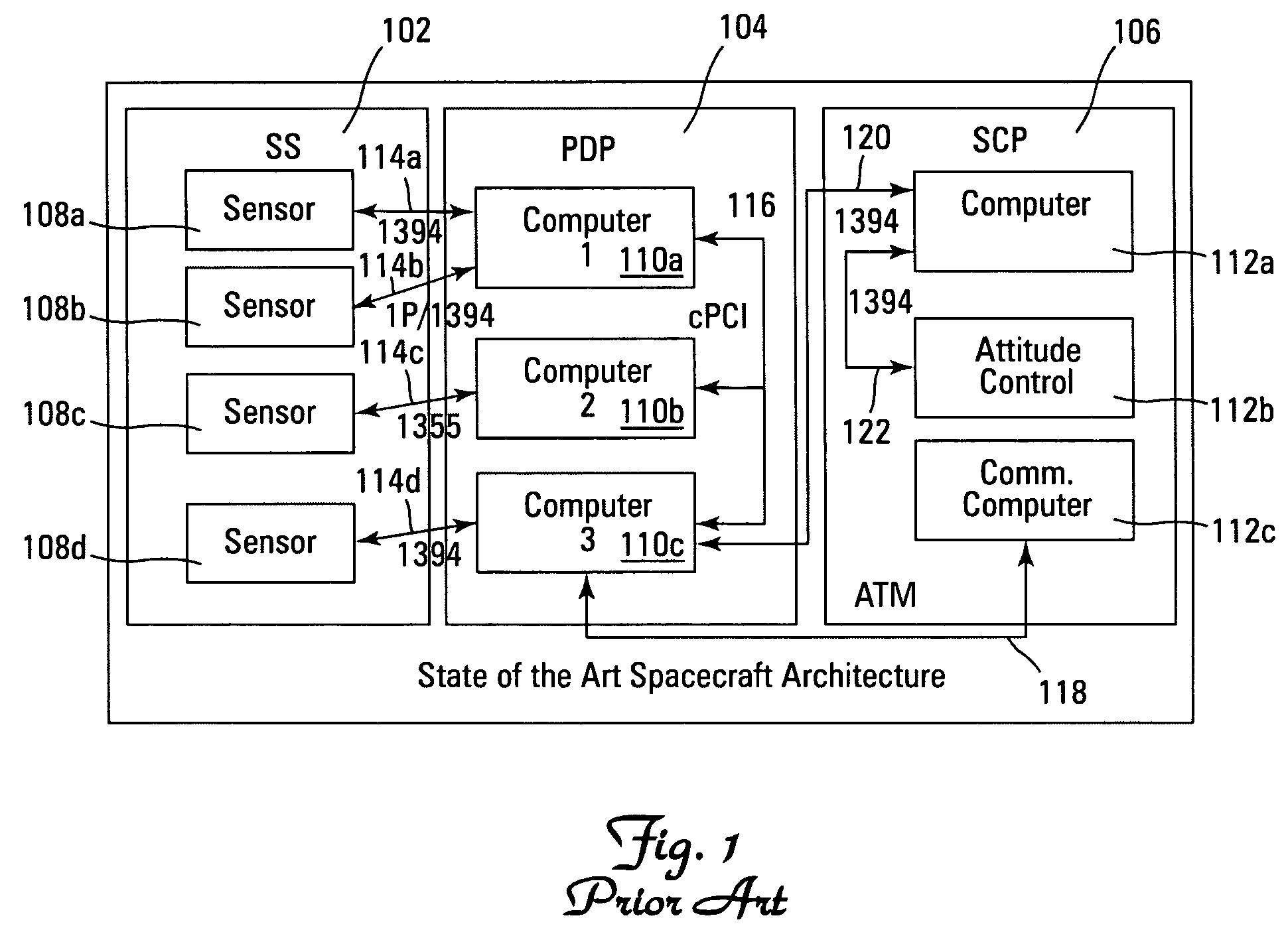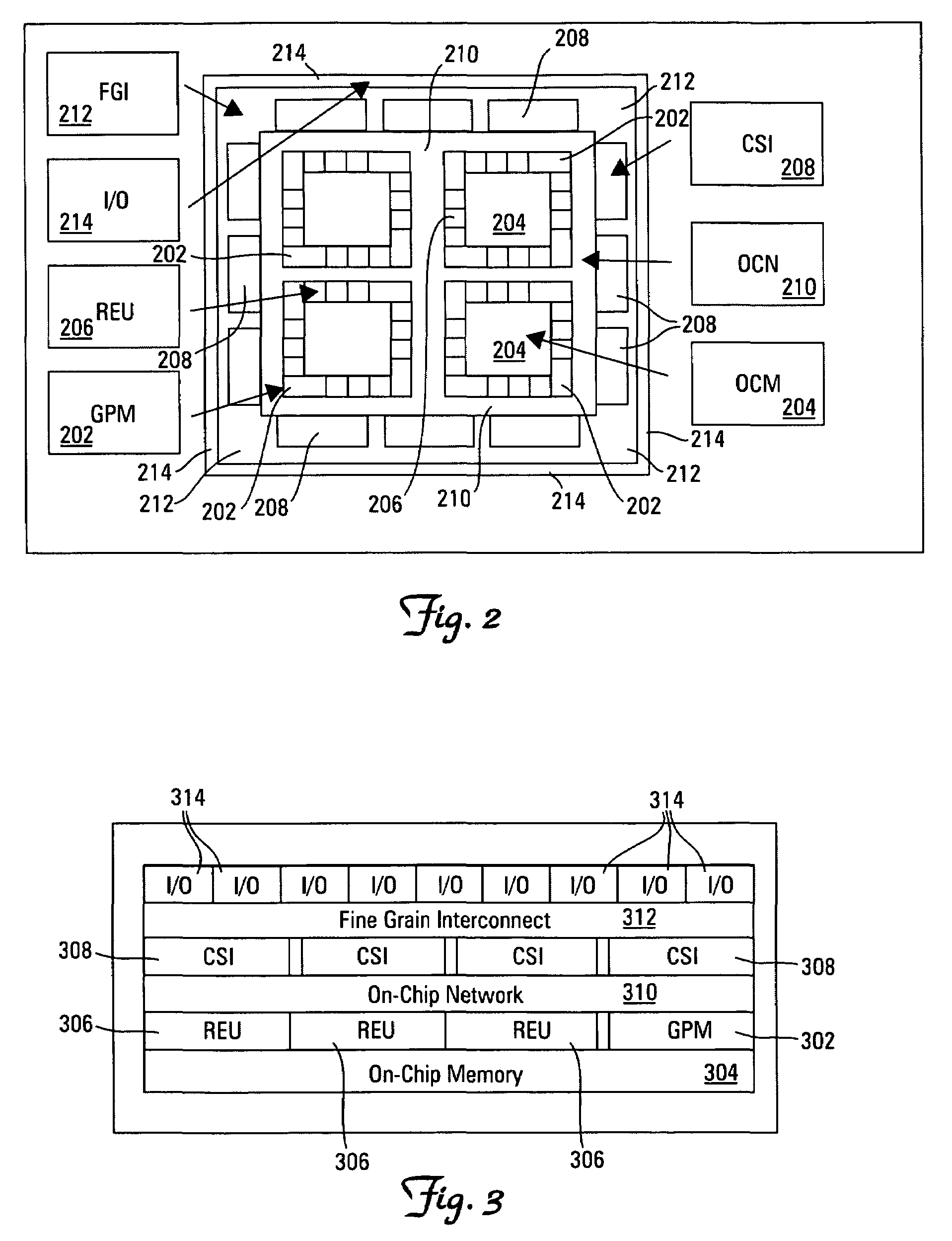Reconfigurable network on a chip
a reconfigurable network and chip technology, applied in the field of network processing, can solve the problems of minimizing the overall system cost, unable to meet the existing space system architecture and associated design approaches are not meeting the new design and cost requirements, etc., to facilitate the processing of large data structures, easy to program, and highly flexible
- Summary
- Abstract
- Description
- Claims
- Application Information
AI Technical Summary
Benefits of technology
Problems solved by technology
Method used
Image
Examples
Embodiment Construction
[0017]With reference again to the figures, FIG. 2 depicts a block diagram of an example architecture for a reconfigurable network 200, which can be used to implement a preferred embodiment of the present invention. As shown, for this example embodiment, reconfigurable network 200 in FIG. 2 is arranged in a particular configuration as a plurality of network processing resources on a semiconductor chip. However, it should be understood that the present invention is not intended to be so limited and can also include within its scope any suitable arrangement and / or number of the network processing resources shown. The actual number and arrangement of the network processing resources is dictated to a great extent by the technology of the target semiconductor processes or applications involved. Also, the present invention is not intended to be limited only to a semiconductor chip. As such, for this example embodiment, reconfigurable network 200 includes sixteen general purpose microproces...
PUM
 Login to View More
Login to View More Abstract
Description
Claims
Application Information
 Login to View More
Login to View More - R&D
- Intellectual Property
- Life Sciences
- Materials
- Tech Scout
- Unparalleled Data Quality
- Higher Quality Content
- 60% Fewer Hallucinations
Browse by: Latest US Patents, China's latest patents, Technical Efficacy Thesaurus, Application Domain, Technology Topic, Popular Technical Reports.
© 2025 PatSnap. All rights reserved.Legal|Privacy policy|Modern Slavery Act Transparency Statement|Sitemap|About US| Contact US: help@patsnap.com



